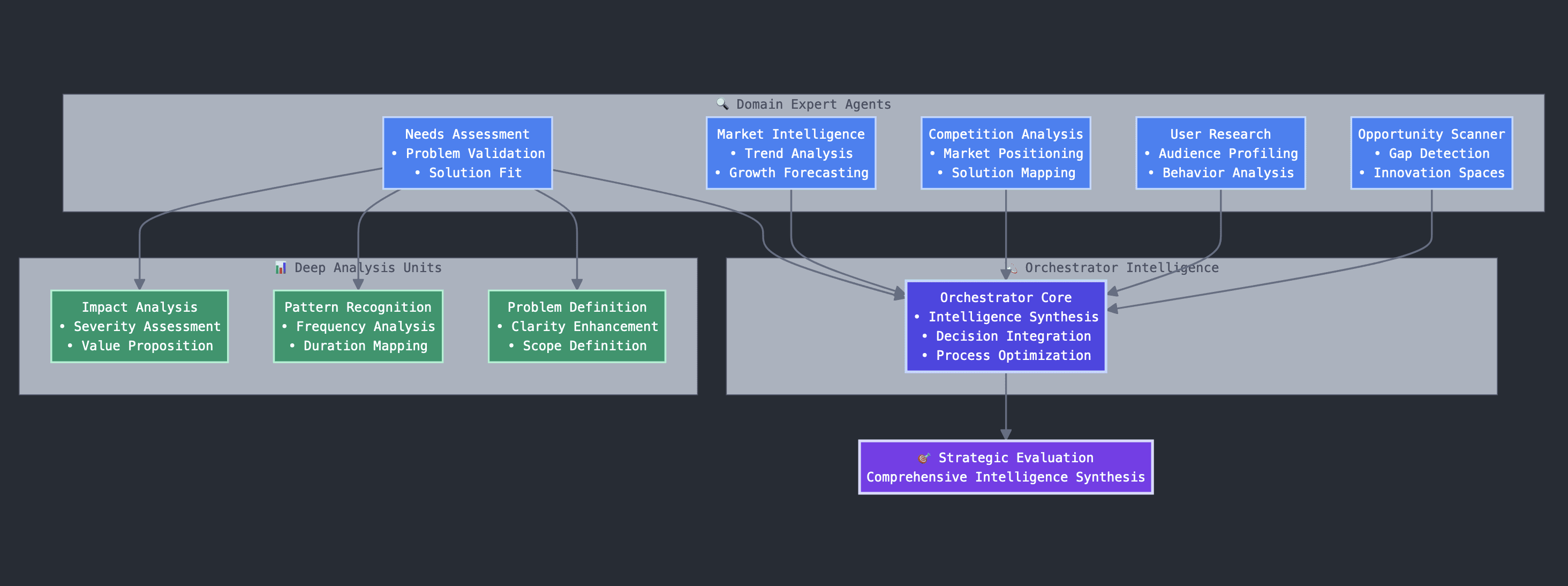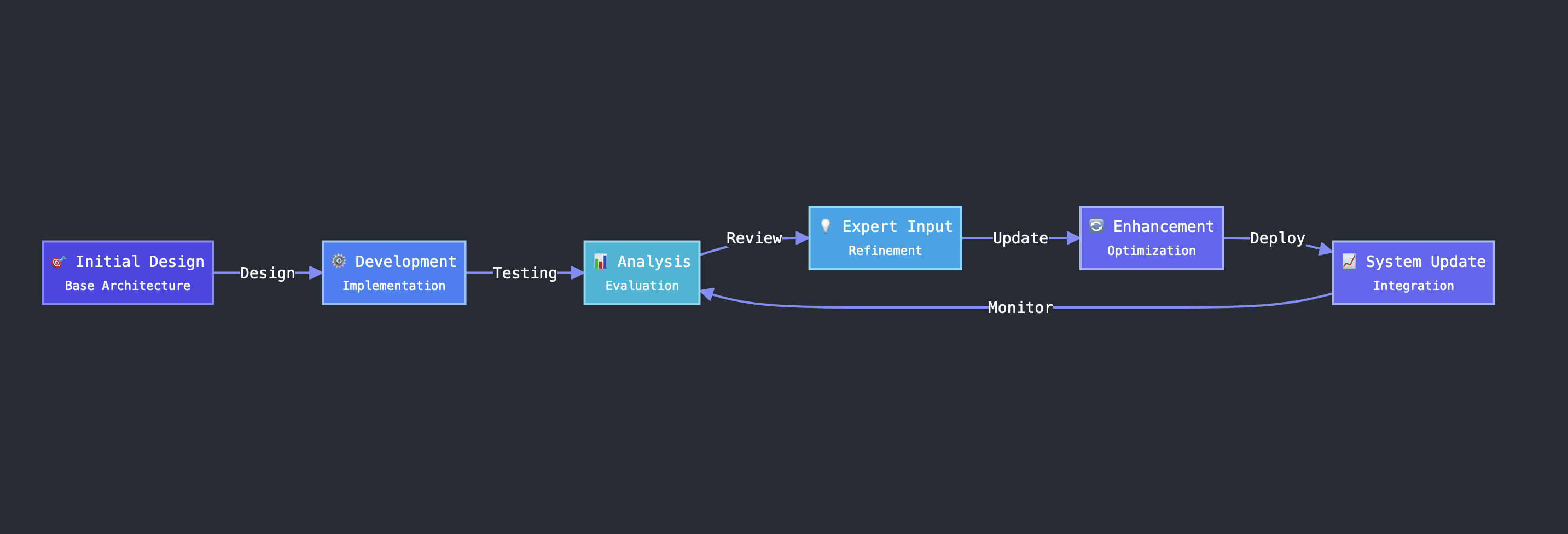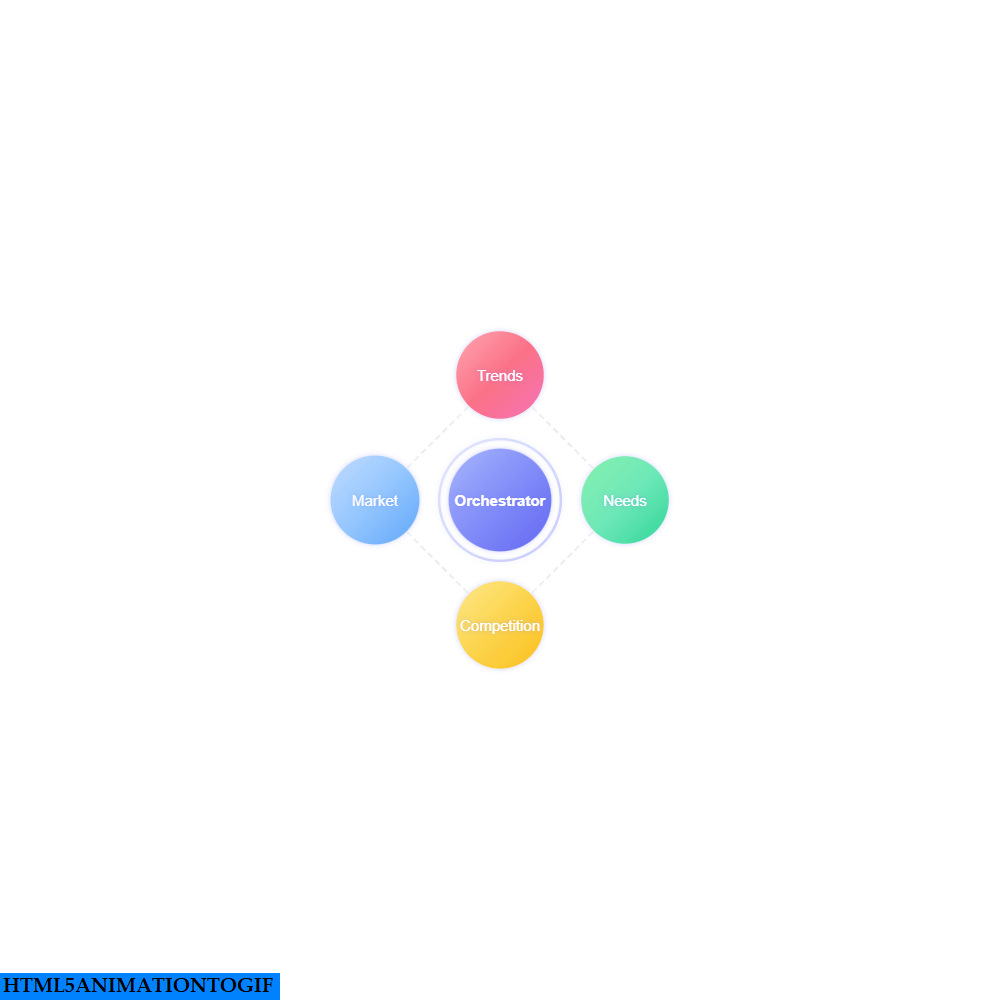Breaking Down Complexity: A Journey into Multi-Agent Systems and the Future of Collaborative AI
AI is rapidly evolving, and we keep finding new approaches to handle complexity. I'm particularly excited about multi-agent systems. The concept is powerful: break down complex questions into manageable pieces, let specialized agents tackle each component, then bring it all together. These systems have the potential to break down big questions into manageable parts, allowing specialized agents to tackle each piece in isolation while working together to form a cohesive whole. Recently, I embarked on an exploration of how such a system might answer a challenging question: Is an idea good enough to make money?
AI is rapidly evolving, and we keep finding new approaches to handle complexity. I'm particularly excited about multi-agent systems. The concept is powerful: break down complex questions into manageable pieces, let specialized agents tackle each component, then bring it all together. These systems have the potential to break down big questions into manageable parts, allowing specialized agents to tackle each piece in isolation while working together to form a cohesive whole. Recently, I embarked on an exploration of how such a system might answer a challenging question: Is an idea good enough to make money?
This isn't a simple question. Assessing an idea's potential touches on a host of interconnected factors—market demand, consumer needs, competition, scalability, and more. Each of these areas is complex in its own right. Trying to tackle them all at once can quickly become overwhelming. I wondered if a modular approach could help—breaking the problem down and assigning each part to a specialized agent, enabling deeper and more precise focus on each aspect.
Breaking Down Complexity with Specialized Agents
The first realization was that the question "Is this idea good enough to make money?" is actually a collection of questions, each requiring its own analysis and expertise. Instead of trying to answer them all at once, I developed individual agents to tackle each one:
Needs Assessment Agent: Evaluates whether a genuine need exists for the idea. Does it solve a real problem or fulfill a desire in the market?
Market Trends and Growth Agent: Analyzes current market directions and growth potentials. Is the market expanding, stable, or declining?
Competitor Solutions Agent: Examines existing solutions to see how they compare. What are others offering, and where does this idea stand in relation?
Target Audience Size Agent: Estimates the potential audience size. Who are the potential customers, and how many are there?
Gap Identification Agent: Identifies opportunities that competitors have missed. Are there unmet needs or underserved segments in the market?
Each agent acts as a specialist in its domain, much like experts in a multidisciplinary team. By focusing deeply on their specific area, these agents can provide thorough and insightful analyses. This approach allows each component of the problem to be examined with the care and attention it deserves.

The Importance of Careful Refinement
A key aspect of this approach is the potential for each agent to be treated with extreme care and thoroughness, involving continuous collaboration and refinement over time. Even though these agents are powered by language models, the amount of thought and prompt engineering that goes into shaping each one is substantial and valuable.
Prompt engineering—the process of designing and refining the inputs and instructions given to AI models—is a crucial part of developing effective agents. By carefully crafting prompts and iteratively improving them based on the agents' outputs, we can align the agents more closely with the expertise and standards of human specialists in the field.
This process isn't a one-time effort but an ongoing collaboration that mirrors how human experts develop their skills over time. It opens up possibilities for AI agents to become increasingly sophisticated partners in problem-solving, benefiting from both the computational strengths of AI and the nuanced understanding of human experts.

Orchestrating a Cohesive Evaluation
While each agent provides valuable insights on its own, making a well-informed decision requires integrating all these pieces. This is where the Orchestrator Agent comes in—a synthesizing layer that combines the outputs from each specialized agent to form a comprehensive picture.
The orchestrator doesn't simply aggregate information; it interprets and contextualizes it. By carefully considering the insights from each agent, the orchestrator can:
Identify Patterns: Recognize trends and correlations across different aspects of the analysis.
Reconcile Contradictions: Address any conflicting information between agents, seeking clarification or further analysis if needed.
Highlight Key Insights: Emphasize the most significant findings that impact the overall assessment.
What's compelling here is how the orchestrator, through continuous collaboration with the specialized agents, can refine its synthesis over time. As each agent improves through careful prompt engineering and expert input, the overall system becomes more effective in delivering nuanced and actionable evaluations.
Hierarchical Structuring and Adaptability
As the system evolved, it became clear that some agents could benefit from further specialization. For instance, the Needs Assessment Agent could include sub-agents focused on:
Severity and Impact Sub-Agent: Assesses how significant the problem is and its effects on potential customers.
Frequency and Duration Sub-Agent: Evaluates how often the problem occurs and how persistent it is.
Specificity and Clarity Sub-Agent: Ensures the problem is well-defined and unambiguous.
This hierarchical structuring allows for even greater depth and precision in analysis. Each sub-agent can be carefully crafted and refined, drawing on expertise from specialists in those specific areas. The modularity of this approach means the system can adapt to increasing complexity by expanding or adding agents as needed, without disrupting the overall architecture.
This adaptability is powerful because it allows the architecture to handle a wide range of problems—from straightforward to highly intricate—scaling the depth of analysis accordingly.

The Advantages of a Multi-Agent Approach
This architecture offers several clear advantages:
Enhanced Accuracy: Specialized agents reduce the risk of overlooking important details, making the overall assessment more reliable. Each agent's focused expertise ensures a thorough examination of its domain.
Continuous Improvement: The collaborative refinement process allows agents to evolve over time, incorporating new insights and adapting to changes in their respective fields.
Efficiency Through Parallel Processing: Agents can work concurrently on their parts of the evaluation, saving time and resources. This parallelism accelerates the assessment process, which is especially valuable when timely decisions are needed.
Scalability and Modularity: New agents can be added, modified, or replaced without affecting the entire system. This flexibility allows the framework to evolve with changing needs or incorporate new types of analysis.
Ease of Maintenance: With a modular design, testing and updating individual agents becomes simpler and more manageable. Issues can be isolated and resolved without disrupting the whole system.
By focusing on qualitative outputs, the agents provide detailed insights rich in context and nuance. This approach plays to the strengths of language models and avoids potential pitfalls associated with relying heavily on quantitative outputs, which may not fully capture the complexities of each domain.

Managing Complexity in Any Context
The principles explored in this experiment extend far beyond evaluating business ideas. At its core, this approach is about managing complexity in any context by recursively breaking down problems into their most fundamental building blocks. Whether you're dealing with intricate organizational strategies, multifaceted research projects, or personal challenges, multi-agent collaboration offers a powerful tool for deeper, more effective problem-solving.
Recursive Breakdown:
Fundamental Building Blocks: Each agent can further deconstruct its task into even more specialized sub-agents, ensuring that every aspect is examined with precision.
Adaptability: This recursive approach allows the system to scale its complexity only when necessary, making it versatile enough to handle a wide array of challenges without becoming unwieldy.
Universal Potential:
Versatility: This methodology isn't tied to specific industries but is applicable to any situation where complexity is a factor. It provides a structured way to dissect and understand problems, regardless of their nature.
Depth and Precision: By allowing agents to focus on the most fundamental elements of a problem, the system ensures that no detail is too small to be considered, leading to more thorough and accurate assessments.
Final Thoughts
This journey into multi-agent collaboration highlights the potential of breaking down complex problems into specialized components, each handled by carefully crafted agents. The emphasis on continuous collaboration and refinement underscores the importance of thoughtful development in AI systems.
By appreciating the value of prompt engineering and the power of even simple AI agents when given the right guidance, we open the door to creating systems that are not only effective but also capable of evolving alongside human expertise. It's an exciting prospect that points toward a future where AI and humans work together more closely than ever to tackle the complex, nuanced challenges of our world.
As we continue to explore and refine this approach, I look forward to discovering new applications and sharing these insights with others. There's significant potential here—not just in immediate applications but in shaping how we use AI to solve increasingly intricate problems. By embracing modularity, specialization, and collaboration, we can build AI systems that deliver deeper, more adaptable insights, opening up new possibilities for innovation and problem-solving.

